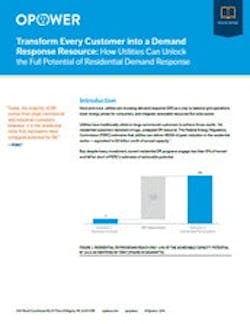More and more, utilities are choosing demand response (DR) as a way to balance grid operations, lower energy prices for consumers, and integrate renewable resources like solar power.
Utilities have traditionally relied on large commercial customers to achieve those results. Yet residential customers represent a huge, untapped DR resource. The Federal Energy Regulatory Commission (FERC) estimates that utilities can deliver 65GW of peak reduction in the residential sector – equivalent to $3 billion worth of annual capacity. But, despite heavy investment, current residential DR programs engage less than 5% of homes and fall far short of FERC’s estimates of achievable potential.
How can utilities reach deeper into their service territories, engage the other 95% of homes, and unlock DR’s full potential? Leaders in the space are looking beyond existing models and employing solutions that take advantage of new customer-facing technologies, regulatory support for dynamic rates, and consumer adoption of connected devices. To reach deeper into their service territory and get the most out of their demand response (DR) programs, utilities need to employ a comprehensive approach based on three key
strategies:
1. Unlock the base through behavior: Engage up to 100% of customers through highly personalized, real-time communications
2. Keep dynamic pricing simple: Drive participation in dynamic pricing with simplified rate structures and engaging customer communications
3. Deepen customer relationships with connected devices: Encourage consumers to adopt connected thermostats through ongoing engagement and customer choice
This white paper will explore how leading utilities are reaching across their entire service territories to realize the full potential of their residential DR programs.
